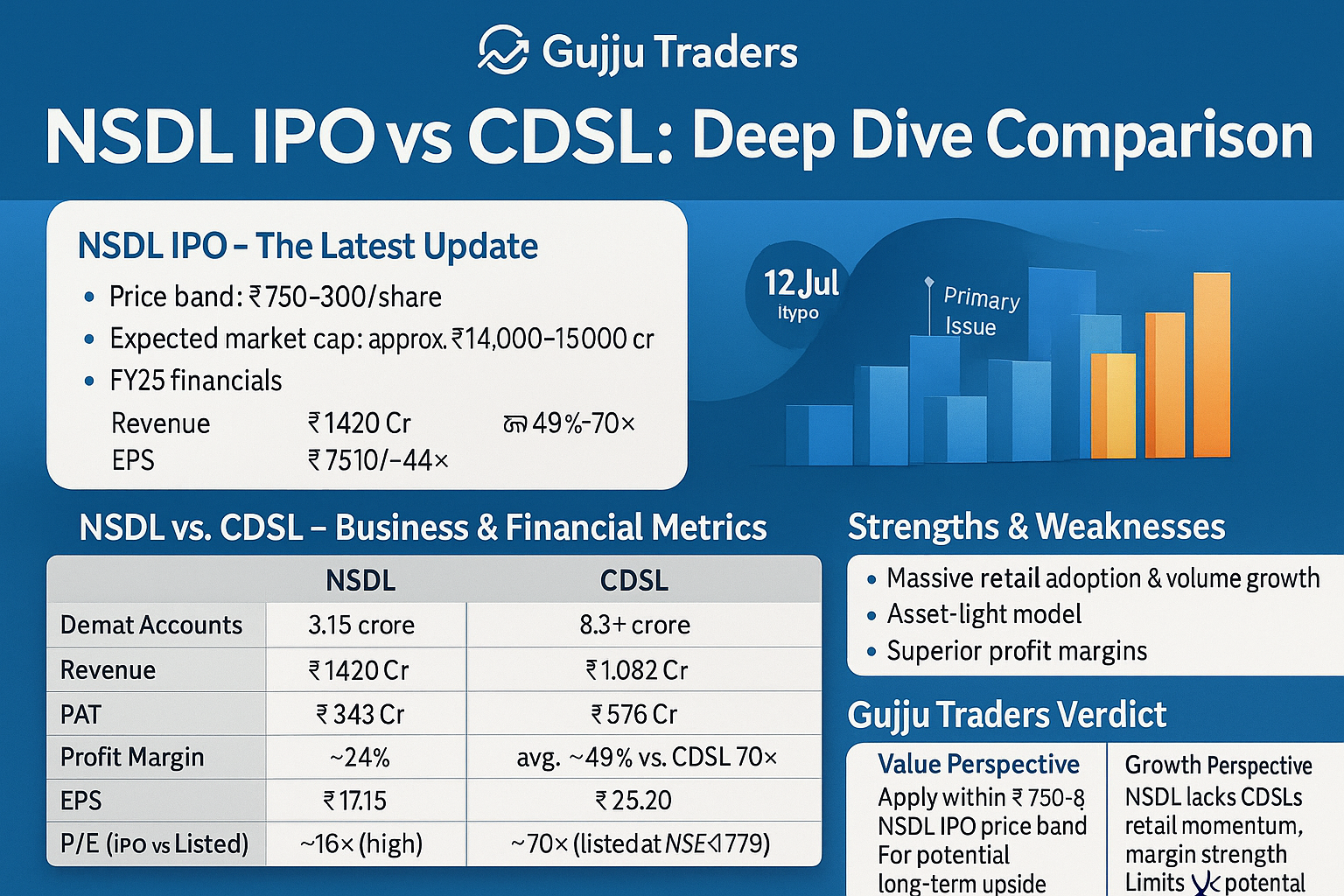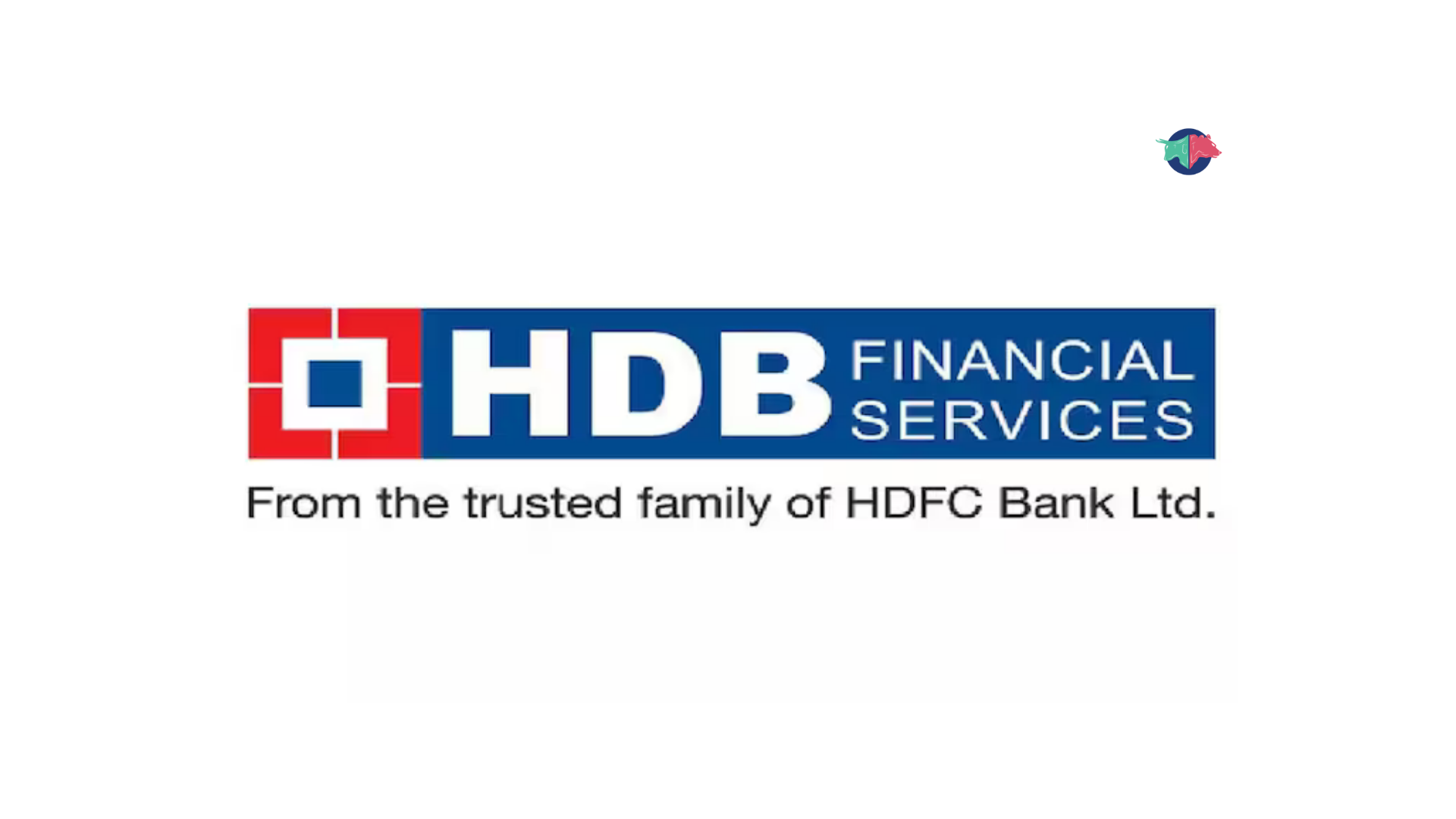1. Introduction – The Landmark Moment On a historic day, the Nifty 50 crossed the 25,000 mark for the first time ever, sending shockwaves of optimism across Dalal Street. Investors cheered, traders booked profits, and policymakers smiled as India’s financial markets scripted yet another milestone. But this rise wasn’t just about liquidity, foreign inflows, or global cues. A major domestic factor played a central role: the recent Goods and Services Tax (GST) cuts announced by the GST Council. These cuts are more than just numbers on paper – they directly impact companies’ profitability, consumer demand, and investor confidence. To truly understand why the market soared, we need to dive deep into the ripple effects of these tax reforms. 2. GST Cuts: What Changed? The GST Council recently announced reductions in tax rates across key categories, targeting both consumer-facing sectors and manufacturing industries. Highlights include: These moves are designed to boost consumption, improve corporate margins, and reduce tax burden on end consumers. 3. Why the Stock Market Reacted Positively Markets respond not just to present realities but future expectations. Here’s why the GST cuts fueled such a rally: 4. Sector-by-Sector Breakdown 📺 A. Consumer Durables – TV, AC, Washing Machines 🚘 B. Electric Vehicles & Auto Ancillaries 🏗️ C. Cement & Real Estate 🏨 D. Hospitality & Tourism 🏥 E. Healthcare 5. Case Studies: How GST Cuts Play Out in Real Life Case 1: A Middle-Class Family Buying Appliances The Sharma family in Delhi had postponed buying a washing machine and refrigerator due to high costs. Post-GST cut, they save nearly ₹6,000 on both combined. Result? They purchase immediately → demand for companies like Whirlpool & LG rises → higher sales reported → stock price goes up. Case 2: An EV Buyer in Bangalore Ravi, a tech professional, wanted to buy the Tata Nexon EV. With GST cuts, the car is ₹30,000 cheaper. His purchase decision is faster. Tata Motors sells more units, reports record quarterly sales, and investors cheer. Case 3: A Builder in Ahmedabad Rajesh, a real estate developer, saves nearly ₹2 crore on cement costs for his 500-apartment project. He offers discounts to buyers, resulting in faster sales. UltraTech Cement benefits from bulk orders, its profits jump, stock price surges. Case 4: A Tourist in Goa Meera planned a holiday but was hesitant due to high hotel tariffs. After GST cut, she books a 4-night stay saving ₹5,000. Hotel chains like Indian Hotels see 20% higher bookings during festive season. Case 5: A Healthcare Scenario in Mumbai Priya’s father requires diagnostic tests costing ₹10,000. With GST cuts, her family saves ₹700–800. Lower medical costs boost hospital footfall, while diagnostic firms see more patients opting for preventive tests. 6. The Larger Economic Impact 7. Risks & Challenges 8. Market Outlook – Can Nifty Go Higher? With GST cuts, India’s consumption story looks brighter. Analysts believe: 9. Conclusion – A Win-Win for All The GST cuts are not just a tax reform – they are a confidence booster. From middle-class families to corporate giants, from first-time home buyers to hotel owners, the benefits flow across India’s economic chain. And as the Nifty touched 25,000, the message is clear – India’s growth story is intact, resilient, and ready to reach new heights.
Finance Trends 2025: SIP Boom, Bond Markets & GenAI Fueling India’s Growth
Finance Trends Reshaping India in 2025: Opportunities for Smart Investors 1. Record-Breaking Equity Mutual Fund Inflows India’s mutual fund industry achieved a historic milestone in July 2025, with equity mutual funds receiving ₹427 billion in net inflows an 81% increase compared to June 2025.The growth was driven primarily by retail investors through Systematic Investment Plans (SIPs), which crossed 91.1 million active accounts and collected ₹284.6 billion in a single month. Why It Matters for Investors 2. Debt Funds’ Biggest Comeback in Years Debt mutual funds attracted ₹1.06 lakh crore in July 2025 the highest monthly inflow for the current financial year. This trend signals that risk-averse investors are moving toward fixed-income products to protect against equity market swings. Why It Matters for Investors 3. Corporate Bond Market at All-Time High Indian corporations raised a record ₹4.07 trillion via corporate bonds from April to July 2025, thanks to low borrowing costs and abundant liquidity. Analysts expect an additional ₹300 billion issuance in August alone. Why It Matters for Investors 4. SEBI’s Investor-Friendly Reforms The Securities and Exchange Board of India (SEBI) plans to introduce single-window clearance for foreign institutional investors, along with lighter compliance norms and improved cybersecurity standards. Why It Matters for Investors 5. Rise of the Retail Trader India’s Financial Independence Moment Over the last five years, India’s demat account count has increased fivefold, and SIP inflows are at record highs. This domestic investor wave is reducing dependence on foreign capital inflows. Why It Matters for Investors 6. Generative AI The New Investment Frontier Indian generative AI startups have secured \$524 million in funding in the first seven months of 2025 — the largest inflow in five years. This reflects a shift in investor appetite toward tech-driven, high-growth sectors. Why It Matters for Investors Gujarat’s Position in These Trends Investor Takeaways
Market Advisory Alert: Prepare for Volatility Amid Tariff Concerns
Dear Valued Clients, In light of recent developments and speculation around potential tariff impositions, Gujju Traders issues this important advisory to guide investors through expected market behavior and recommended actions. As always, our objective is to protect capital, manage risk smartly, and prepare for tactical opportunities. What to Expect If Tariffs Are Announced: Should news of tariff imposition materialize, market sentiment is likely to turn cautious and fragile. Historically, such events tend to trigger a short-term risk-off scenario, particularly impacting SmallCap and MidCap segments, which are more vulnerable to institutional or operator exits. Strategic Advice from Gujju Traders: 1. Book Profits on Green Positions: If your portfolio has stocks currently trading in the green, it is advisable to book partial or full profits. Holding cash during volatile sessions gives you the power to act when the opportunity arises. 2. Exit from Narrow Loss Positions: Positions that are at a marginal loss can be booked proactively. This not only prevents deeper cuts but also unlocks capital that can be deployed to buy high-quality stocks at lower valuations post-correction. 3. Don’t Panic, Manage Risk: This advisory is not meant to instill fear but to enforce disciplined risk management. Volatility is a part of the market, but how we respond to it makes all the difference. 4. Avoid Fresh Entries Today: New trades or investments can be deferred until the market digests the news flow. Let the dust settle before positioning for the next move. Gujju Traders’ Commitment: We at Gujju Traders continue to monitor real-time market developments and are committed to delivering timely insights to our clients. Our in-house analytics and operator activity tracking help identify trends before they become headlines. Stay updated via the Gujju Traders App – Your Trading Partner, and don’t hesitate to reach out for portfolio consultation or intraday strategy advice. Stay Safe. Stay Disciplined. Stay Profitable. Warm regards,Team Gujju Traders Disclaimer: This is a market opinion intended for educational and risk management awareness. Please consult your financial advisor before making any trading decisions.
ED raids nearly 50 sites linked to Anil Ambani in Rs 3,000 cr Yes Bank loan fraud probe
ED Raids Anil Ambani’s Reliance Group in Rs 3,000 Crore Money Laundering Case Linked to Yes Bank Loans Date of Incident: July 24, 2025Location: Mumbai & Delhi, India Introduction The Enforcement Directorate (ED), India’s top financial investigation agency, conducted widespread raids across multiple premises linked to Anil Ambani’s Reliance Anil Dhirubhai Ambani Group (RAAGA) on July 24, 2025. The action, stemming from allegations of money laundering and bank fraud, targeted over 50 entities and individuals associated with the group. The investigation is centered on suspicious loan disbursements totaling over Rs 3,000 crore from Yes Bank between 2017 and 2019. Scope of the Raids The ED carried out searches at over 35 locations in Mumbai and Delhi, covering: These raids are part of a broader investigation under the Prevention of Money Laundering Act (PMLA). Allegations and Investigative Background The origin of the probe lies in: Key Allegations: Market Reaction and Company Response Following the news of the ED action: In response, both companies issued statements: Regulatory & Financial Timeline Year Event 2017–2019 Yes Bank disburses large loans to RAAGA firms 2019 SEBI begins investigating insider trading and misreporting 2020 Anil Ambani declares bankruptcy in a UK court 2022 RAAGA firms face insolvency and restructuring bids 2025 ED initiates money laundering probe based on CBI and SEBI inputs Legal Implications & Future Action The ED is currently: If charges are proved, possible consequences include: Broader Impact on Business Ecosystem Conclusion The ED raids on Anil Ambani’s business empire signal a tightening noose around corporate corruption and bank fraud in India. With more regulatory bodies stepping up oversight, the case could redefine how legacy corporate groups approach financial discipline. As investigations proceed, the unfolding events will be watched closely by stakeholders across India’s financial ecosystem. Suggested By: Gujju Traders LLP
Rs 43,289 Crore Gameplan: How Jane Street Tried to Hijack India’s Derivatives Market
Rs 43,289 Crore Gameplan: How Jane Street Tried to Hijack India’s Derivatives Market Page 1: Executive Summary Between January 2023 and March 2025, U.S.-based quantitative trading firm Jane Street Capital manipulated India’s index derivatives market by inflating and crashing prices of Nifty and Bank Nifty through sophisticated algorithmic expiry-day strategies. SEBI’s July 4, 2025, order bans Jane Street and its Indian trading entities (JSATL, JSITPL, JSALLC) and demands the return of Rs 4,843.81 crore in gains, making this the most significant regulatory crackdown in Indian market history. Page 2: Introduction to Jane Street and its India Presence Jane Street is globally known for high-frequency trading (HFT) and proprietary quantitative models. Its India-linked FPIs used powerful co-located servers and AI-driven strategies to exploit expiry-day weaknesses in India’s derivatives market. The firm operated silently through: These entities used vast financial muscle and ultra-fast servers to dominate expiry-day volumes, especially in Bank Nifty options. Page 3: SEBI’s Crackdown – Timeline and Action SEBI Statement: “This case threatens the foundational integrity of price discovery.” Page 4: The Master Trick: Expiry-Day Pump and Crash Jane Street played a high-stakes game of pump-and-dump on expiry days: This trick trapped retail call buyers and gave them massive gains from crashing premiums. Infographic Suggestion: A timeline flowchart showing early stock spike (9:30 AM), OTM call premium spike (11:00 AM), and steep index drop (2:45 PM). Page 5: Mirror Trading Exposed Jane Street used mirror trading to build fake volume and influence prices: Infographic Suggestion: Split-screen graphic showing two FPI accounts placing buy/sell orders at the same timestamp with matching prices and volumes. Page 6: Impacted Stocks and Their Use in Manipulation Stock Manipulation Method Result HDFC Bank Pumped in early trades Index push ICICI Bank Volume game at open OI build-up SBI Spike before reversal Bank Nifty support Axis Bank Short build-up Triggered panic fall Kotak Bank Used for intraday reversals Retail trapped IndusInd Bank Fast rise & fall Stop-loss hunting Page 7: Affected Broking and Financial Stocks The scam may hurt revenue of broking companies: Stock Impact Zerodha (unlisted) Loss of retail trust, lower expiry trades Angel One Drop in options turnover volume ICICI Securities Derivative volume cutbacks IIFL Securities Revenue hit from lower active traders 5paisa Capital Reduced expiry-day engagement Investors are now shying away from high-risk expiry trades, hurting brokers’ earnings. Infographic Suggestion: Bar graph showing drop in expiry-day retail trades from Jan 2024 to July 2025. Page 8: Financial Impact Breakdown Metric Value Total Profit Rs 43,289 Cr Gains Frozen Rs 4,843.81 Cr Losses in Cash Segment Rs 7,687 Cr Retail Loss Ratio 90-93% Daily Profits (Avg) Rs 40-50 Cr on expiry Page 9: Timeline of Major Expiry Manipulations Page 10: Public Impact and Retail Reaction Infographic Suggestion: Pie chart comparing pre- and post-ban retail participation in Bank Nifty options. Page 11: How SEBI Detected the Scam Page 12: Understanding Mirror Trading for Beginners Mirror Trading = Buy & sell same stock at same price, time, and volume using two separate accounts (but same owner). Used to: Jane Street mastered this with ultra-speed bots. Page 13: Why Bank Nifty was the Target Jane Street could control 40-50% of expiry-day volume using this strategy. Page 14: Regulatory Loopholes Used Page 15: Reactions from Experts Page 16: Global Comparisons Page 17: What Happens Next Page 18: Advice for Retail Investors Page 19: Gujju Traders Warnings Page 20: Conclusion and Final Punchline The Jane Street case exposes the vulnerabilities of India’s retail-dominated expiry-day trading culture. However, SEBI’s strong action is a message to all global manipulators – India is no longer a playground for rigged trades. “Expiry ka Sikka, Retail ka Jhatka – Jab Jane Street Ne Khela Crorepati Ka Khel!” Stay Smart. Stay Informed. Follow Gujju Traders.
Gujju Traders Insight: NSDL IPO vs. CDSL – Deep Dive Comparison
NSDL Enters the Ring, Is CDSL Ready for a New Challenger? 📌 1. NSDL IPO – The Latest Update 📊 2. NSDL vs. CDSL – Business & Financial Metrics Metric NSDL (FY24–25) CDSL (FY25) Demat Accounts 3.15 crore 8.3+ crore reddit.com+15livemint.com+15sureshgopalan.in+15unlistedzone.com Revenue ₹1,420 Cr ₹1,082 Cr PAT ₹343 Cr ₹526 Cr Profit Margin ~24% ~49% average EPS ₹17.15 ₹25.20 P/E (IPO vs Listed) ~44× ~70× (NSE ₹1,779) P/B ~16× (high) ~16–22× 🔍 3. Strengths & Weaknesses 💬 Market Pulse & Reddit Sentiment “Stock has been rising steadily without correction… P/E surpassed two standard deviations of average, overvalued” reddit.com+3reddit.com+3reddit.com+3 “NSDL’s P/E 44× vs CDSL 65× … limited upside ahead of listing” sureshgopalan.in+11unlistedzone.com+11altiusinvestech.com+11 📌 4. Gujju Traders Verdict ✅ Value Perspective ⚠️ Growth Perspective 🧮 5. What It Means for You 🔜 6. What Should Gujju Traders Clients Do? 🔍 Want Our Premium Insight? As a Gujju Traders premium subscriber, you get: 👉 Message us to activate your Premium IPO Toolkit today
Genus Power Infrastructures Ltd, Steering India’s Smart Meter Revolution
Genus Power Analysis 2025 – ₹31,300 Cr Order Book, Govt 250M Meter Vision, P/E ~40× & FY30 Growth TargetsDive deep into Genus Power: ₹31,300 cr smart-meter order book, Q3/Q4 FY25 results, alignment with Gov’t RDSS mission (250M meters by 2027), and stock price targets up to ₹1,676 by 2030. 1. 📦 Order Book Update: ₹31,300 Crore (as of Dec 2024) 2. 🏛️ Government Vision & Official Mandates 🔹 National Smart Meter Mission & RDSS Push 🔹 Company Leadership on Vision 3. 📊 Quarterly & Annual Financial Performance Q3 FY25 (ended Dec 2024) Metric Q3 FY25 YoY Growth Revenue ₹604.2 crore +133% PAT ₹68.2 crore >5× (pv-magazine-india.com) Q4 FY25 (ended Mar 2025) Metric Q4 FY25 YoY Growth Revenue ₹936.8 crore +123% EBITDA ₹208.5 cr (22.3%) +276% PAT ₹129.3 crore >4× (angelone.in) FY25 Annual Standalone 4. 💰 Valuation Metrics & Market Capitalization 5. 🔝 Growth Roadmap & Multi-Year Targets Year Revenue Target PAT Target Key Drivers FY26 ₹4,000 crore ₹500–600 crore Meter ramp-up, AMISP, ToD metering FY27 ₹6,000 crore ₹900+ crore 150M meters deployed, recurring O\&M FY28–30 ₹8,000–10,000 cr ₹1,200–1,500 cr EV/solar metering, exports, analytics 6. 🔍 Stock Price Targets (2024–2030) According to analyst FullOrissa projections: 7. 🤝 Peer Comparison Company Market Cap (₹cr) P/E (TTM) ROE FY25 Genus Power ~11,000 ~40× ~17% HPL Electric ~1,200 20–30× ~12% Schneider India ~10,500 50–55× ~18% L\&T E\&A ~400,000 ~30× ~15% Genus’s premium valuation is justified by its massive P/L order visibility, zero debt, and high ROCE. 8. ⚠️ Key Risk Factors 🎯 Gujju Traders Verdict Conclusion: Genus Power is a policy-driven, growth-led, zero-debt, mid-sized infrastructure-tech stock with clear visibility and high multi-year upside. Ideal for long-term portfolios targeting India’s utility transformation.
HDB Financial Services IPO: Powered by HDFC Legacy, Targeting ₹1450?
India’s IPO market is witnessing one of its most anticipated listings HDB Financial Services Ltd., the premium NBFC arm of HDFC Bank, is opening its doors to the public. With a strong foundation, proven profitability, and HDFC’s legacy, this IPO is poised to deliver multibagger returns. 🏛️ HDB Financial: The Crown Prince of India’s NBFC Sector Think of HDB as the financially sound, well-nurtured heir of a billionaire legacy. Backed by HDFC Bank, India’s largest private bank by market capitalization, HDB Financial Services stands tall with strong fundamentals, technology integration, and unmatched brand trust. This is not a start-up story; this is the evolution of a well-oiled lending powerhouse. 🔐 Strengthened by HDFC: The Power Behind the Throne HDB is not just backed by a parent it’s backed by the banking backbone of India. With HDFC Bank’s recent merger and expanded reach, HDB is strategically positioned to: This isn’t a debut—it’s a strategic move by a matured financial arm. 📊 IPO Details – Confirmed IPO Detail Value Issuer HDB Financial Services Ltd Price Band ₹700 to ₹740 per share Lot Size Likely 20–25 shares Issue Size Approx ₹9,500 crore IPO Opens 25 June 2025 (Expected) IPO Closes 27 June 2025 (Expected) Listing On NSE and BSE Lead Managers Kotak, Axis, JM Financial 📈 Financial Performance Highlights Year Revenue (₹ Cr) Net Profit (₹ Cr) Gross NPA (%) Branches FY21 10,356 1,001 3.8 1,319 FY22 11,985 1,247 3.4 1,431 FY23 13,826 1,560 2.9 1,532 A consistent decline in NPAs, rising profits, and expanding reach show sustained growth and responsible lending. 🎯 Gujju Traders’ Target: ₹1350 to ₹1450 in 1 Year With an IPO price range of ₹700–₹740, we at Gujju Traders believe the upside potential is enormous. Backed by solid earnings, low NPAs, and the brand value of HDFC, the listing could see a strong debut and long-term growth. Target Range (12 months): ₹1350–₹1450 That’s 80% to 100% potential return for investors who stay the course. 🔍 Why You Should Apply – Key Highlights ✅ 1. Strong Parentage A wholly-owned subsidiary of HDFC Bank, ensuring deep-rooted trust, governance, and operational strength. ✅ 2. Stable Profitability Growing revenues, improving margins, and strong asset quality make HDB a standout among NBFCs. ✅ 3. Wide Distribution Network 1,500+ branches across India ensure access to tier-2 and tier-3 markets, fueling expansion. ✅ 4. Tech-Driven Lending HDB is riding the digital lending wave with smart credit analysis, AI-driven collection, and fast disbursal. 📢 Final Verdict from Gujju Traders HDB Financial Services is not just another IPO—it’s a well-planned listing by a seasoned, profitable NBFC with brand equity few can match. This IPO is an entry gate into the HDFC universe, with a lower ticket size and high upside. 🙌 Gujju Traders Recommends: APPLY with Confidence We strongly recommend investors to apply for the HDB Financial IPO in both retail and HNI segments. The fundamentals are solid, the valuations are attractive, and the long-term growth story is undeniable. 📞 For IPO application support, research reports, or PMS investment guidance, contact Gujju Traders: Phone: 96248 86975Email: gujjutraders2024@gmail.comWebsite: www.gujjutraders.com Follow us on Instagram & Telegram for live updates, allotment status, and listing day strategy!
HDB Financial Services IPO: Everything Investors Must Know Before July 2 Listing
HDB Financial Services IPO 2025 Price, GMP, Financials, PE Ratio & NBFC Comparison Get complete details of HDB Financial IPO, including GMP, price band, financials, PE ratio, and NBFC comparisons with Bajaj Finance, L&T Finance, and more. Gujju Traders brings the complete analysis. 🔥 Trending Now: HDB Financial IPO – How It Stands Out Among NBFC Giants HDB Financial Services, backed by HDFC Bank, is launching one of the biggest IPOs of 2025. With a price band of ₹700–₹740, this ₹12,500 crore issue is drawing attention not only for its scale but also for its valuation compared to other NBFC players. 💼 HDB Financial Services: Company Overview 📊 IPO Snapshot Detail Information IPO Opening Date June 25, 2025 IPO Closing Date June 27, 2025 Price Band ₹700 – ₹740 GMP (Current) ₹80 – ₹85 Expected Listing Price ₹820 – ₹830 Issue Size ₹12,500 Crore Lot Size 20 Shares Tentative Listing Date July 2, 2025 📉 Past Financial Results of HDB Financial Services Financial Year Revenue (₹ Cr) Net Profit (₹ Cr) ROE (%) AUM (₹ Cr) GNPA (%) FY21 10,123 391 2.4% 60,000+ 3.9% FY22 12,407 1,011 6.2% 75,000+ 3.5% FY23 14,301 1,959 10.3% 90,000+ 2.6% FY24 16,380 2,446 15.3% 1,38,000+ 2.1% 📌 PE Ratio Comparison (Post-IPO Valuation) 🥊 HDB vs Other Top NBFC Players NBFC Market Cap (₹ Cr) FY24 PAT (₹ Cr) PE Ratio ROE (%) GNPA (%) HDB Financial 62,000–65,000 2,446 ~25.3x 15.3% 2.1% Bajaj Finance 4,60,000+ 15,800+ ~32x 20%+ ~1.0% L&T Finance 42,000+ 2,400 ~16x 13% 2.7% Muthoot Finance 55,000+ 3,150 ~13x 18% 1.5% Sundaram Finance 48,000+ 1,200 ~40x 15% ~2.0% 📌 Insight: HDB’s valuation places it between Bajaj Finance (premium) and L&T Finance (value). It offers a strong mix of growth and quality without overpricing. 📈 GMP & Listing Forecast ✅ Gujju Traders Verdict “If you missed investing in Bajaj Finance in its early days, HDB Financial offers a second chance. With its high-growth profile and discounted valuation, this IPO is a golden opportunity for investors looking for quality NBFC exposure.” 🧭 Apply or Avoid? Here’s Your Checklist Criteria HDB Financial Verdict Business Fundamentals ✅ Strong Growth Potential ✅ High IPO Pricing ✅ Reasonable PE vs Sector Average ✅ Balanced Listing Gain Potential ✅ Positive Long-term Investment Value ✅ Solid 🔗 Internal Linking Suggestions 📝 Final Words by Gujju Traders The HDB Financial IPO brings a rare blend of brand backing, financial stability, and value pricing. Whether you’re looking for listing gains or long-term wealth creation, HDB’s IPO demands a serious look. 📣 Stay tuned with Gujju Traders for daily IPO GMP updates, detailed stock analysis, and exclusive investor insights. Tag Line : Unlisted price ₹1,275. IPO price ₹740. Your chance to flex ‘bought at base.
✈️ Prelude: Ready for Takeoff
02:30 PM (13:38 IST) — Taxiing and Takeoff 02:31 PM (13:39 IST) — Wheels Up, Trouble Begins 💥 02:32 PM — Cataclysm Unfolds The aircraft plummeted into Meghani Nagar, a densely populated locality near the airport. It struck the hostel block of BJ Medical College, a residential complex for medical students and doctors—amid lunchtime activity. Eyewitnesses reported: In under two minutes from takeoff, the aircraft was obliterated. Debris scattered over a wide radius, engulfing the building and surrounding areas. 🔥 02:33 PM Onward — Rescue & First Response First responders—CISF, CRPF, NDRF, IAF, BSF, local police, AMCPD, and NSG units—rose to immediate action: Local medical staff, including doctors and students inside the hostel, rushed to rescue and treat the injured, many of whom escaped by jumping from second-floor windows. (reuters.com) ⚰️ 02:35–05:00 PM — Tragic Toll 🧑🔧 Beyond the Tragedy — Official & Corporate Response Black Box Recovery & Investigation Preliminary Theories & Urgent Safety Worries Industry & Market Ripples Air India / Tata Group Commitment 🤝 Gujju Traders’ Voice: Grief, Action, Demand 1. Collective Sorrow & Solidarity We mourn with every bereaved family—whether British, Portuguese, Canadian, or Indian. We share their pain as brothers and sisters. A tragedy of this magnitude strikes deep into the business community that thrives on global connections. 2. On-the-Ground Relief Mobilization 🔹 Marketplace Fundraising 🔹 Aid via Warehouses & Volunteers 🔹 Food & Medical Teams 3. Advocacy for Safety Overhaul 🔧 Technical Transparency We urge complete openness about: 🛠️ Infrastructure & Emergency Readiness 👷 Audit of Air India Fleet & Training 4. Reaffirming Trade & Hope Ahmedabad traders depend on strong air links—particularly with the UK, where many Gujarati entrepreneurs and communities thrive. 🌍 National & Global Reactions 🏛️ Government Officials ⏭️ What Lies Ahead 🧭 Conclusion For the Gujarati trading community, Flight AI 171’s tragedy is both a personal plunge into grief and a community reckoning: In this hour of darkness, the Gujarati ethos comes alive: to mourn together, to aid together, to rebuild together—and to ensure that tragedy strengthens, rather than breaks, the community spirit we cherish. Note: This article draws from extensive reporting by CBS, Reuters, The Guardian, AP, Al Jazeera, Financial Times, and more. For detailed investigative updates, please refer to the citations embedded.










